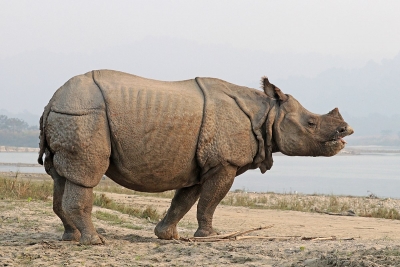
Rhinoceros is a giant horn-bearing herbivore that’s among the largest living land mammals. It derives its names from its most pronounced feature: the horn. The term stems from the Latin word rhinoceros and Greek word rhinokeros, both of which take root in rhinos, which means nose, and keras, meaning horn. (Keras is also the origin of keratin, the protein that is the main substance of hair, nails, horns, and feathers).
Rhinoceroses are characterized by the possession of one or two horns on the upper surface of the snout; these horns are not true horns but are composed of keratin, a fibrous protein found in hair. Modern rhinoceroses are large animals, ranging from 2.5 metres (8 feet) long and 1.5 metres (5 feet) high at the shoulder in the Sumatran rhinoceros to about 4 metres (13 feet) long and nearly 2 metres (7 feet) high in the white rhinoceros. Adults of larger species weigh 3–5 tons. Rhinoceroses are noted for their thick skin, which forms platelike folds, especially at the shoulders and thighs. All rhinos are gray or brown in colour, including the white rhinoceros, which tends to be paler than the others. Aside from the Sumatran rhinoceros, they are nearly or completely hairless, except for the tail tip and ear fringes, but some fossil species were covered with dense fur. The feet of the modern species have three short toes, tipped with broad, blunt nails.
In rhinoceroses, females do not conceive until about six years of age; gestation is long (16 months in most species), and they give birth to only one calf at a time. The period of birth between calves can range from 2 to 4.5 years. Thus, the loss of a number of breeding-age females to poachers can greatly slow the recovery of rhinoceros populations.
Credit : Britannica
Picture Credit : Google



